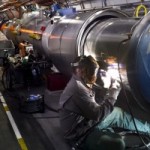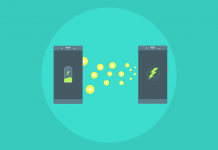 Just four days after shutting down the LHC – Large Hadron Collider’s proton running experiments, CERN has completed the transition to lead-ion running and has recorded its first collisions. “The speed of the transition to lead ions is a sign of the maturity of the LHC,” said CERN director general Rolf Heuer.
Just four days after shutting down the LHC – Large Hadron Collider’s proton running experiments, CERN has completed the transition to lead-ion running and has recorded its first collisions. “The speed of the transition to lead ions is a sign of the maturity of the LHC,” said CERN director general Rolf Heuer.
“The machine is running like clockwork after just a few months of routine operation.” Making the switch is not just a matter of chucking something different into the machine, as every single element of the process needs recalibration. The CERN team started by threading a single beam round the ring in one direction and steadily increasing the number of laps before repeating the process for the other beam. Once circulating beams had been established they could be accelerated to the full energy of 287 TeV per beam – much higher than for proton beams because lead ions contain 82 protons. There was then another set of adjustments at CERN to be made before lining the beams up for collision and establishing that stable beams had been created.
The collisions have created the highest temperatures and densities ever produced, and will create quark-gluon plasma, the type of matter present in the first moments of the universe’s existence.
The three CERN experiments recording data with lead ions – known as ALICE, ATLAS and CMS – will now be able to run lead ions continuously until a scheduled technical stop begins on 6 December. “It’s been very impressive to see how well the LHC has adapted to lead ions,” said Jurgen Schukraft, spokesperson of the ALICE experiment. “The ALICE detector has been optimised to record the large number of tracks that emerge from ion collisions and has handled the first collisions very well, so we are all set to explore this new opportunity at LHC.” “We designed CMS as a multi-purpose detector,” said Guido Tonelli, the collaboration’s spokesperson, “and it’s very rewarding to see how well it’s adapting to this new kind of collision. Having data collected by the same detector in proton-proton and heavy-ion modes is a powerful tool to look for unambiguous signatures of new states of matter.”



